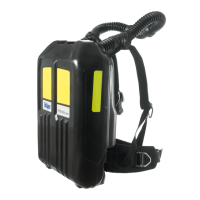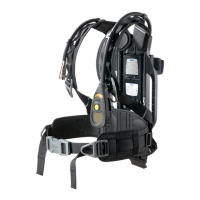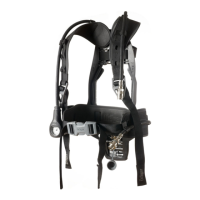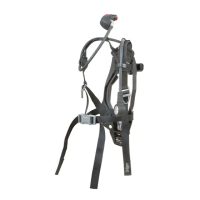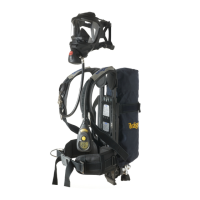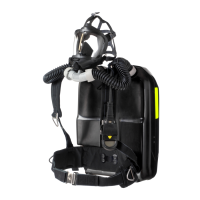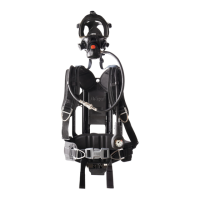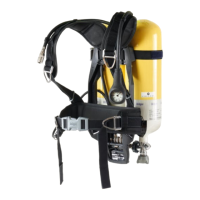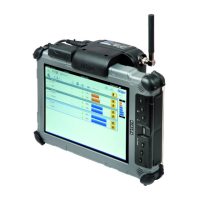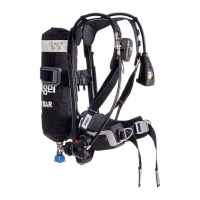Plus and PSS Series - Lung Demand Valve
tm 1285.001 - August 2001
5:4
3. Rinsing and Drying
Remove cleaning and disinfecting solutions by rinsing in clean running
water, followed by drying.
Do Not exceed a temperature of 60 degrees Celsius when drying
components. Immediately remove from the drying cabinet when dry.
Never exceed a period of 30 minutes.
5.3.2 Cleaning and Disinfecting
External cleaning of the lung demand valve may be carried out as
required using a cloth dampened in the above cleaning solution.
Important Note: When cleaning using a dampened cloth, take care to prevent
any fluid residue entering the demand valve.
When however the user consides it necessary to internally disinfect the
lung demand valve then these instructions should be followed:
Note: 1
Detach demand valves (fitted with male coupling) from the female
coupling of the medium pressure hose of C.A.B.E.
Note: 2
If necessary, demand valves attached directly to the reducer should be
removed at the hose connection to the reducer. For details of removal
refer to the appropriate section of the relevant C.A.B.E. Training Manual.
Tools Required
Plate Spanner R26817
Silicone Spray - SILKOSPRAY® (500ml) 1563343
Refer to Figure 1 – (Type A Illustrated.)
1 If required, detach demand valve from equipment.
2 Fold rubber cover (1) from front of lung demand valve. Using plate
spanner inserted into radial slots of bayonet cap, turn bayonet cap (2)
12
3
4
5
6
Fig. 1
0584
6
counter-clockwise and remove
cap from body of demand
valve.
Note:
Types A and AE - the positive
pressure spring remains attached
to the bayonet cap.
Do Not
remove spring. Take care not to
stretch or distort the spring.
3 Using the thumb and forefinger
carefully grip the centre plate of
the diaphragm (3), tilt centre
plate and lift the diaphragm from
the body of the lung demand
valve. Remove slip ring (4).
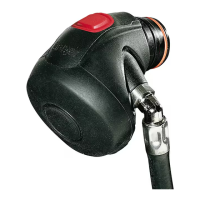
